Implementation of Wavelet Analysis on Thermal Images for Affective States Recognition of Children with Autism Spectrum Disorder.
Abstract:
Children with Autism Spectrum Disorder are identified as a group of people who has difficulties in socio-emotional interaction. Most of them lack the proper context in pr...Show MoreMetadata
Abstract:
Children with Autism Spectrum Disorder are identified as a group of people who has difficulties in socio-emotional interaction. Most of them lack the proper context in producing social response through facial expression and speech. Since emotion is the key for effective social interaction, it is justifiably vital for them to comprehend the correct emotion expressions and recognitions. Emotion is a type of affective states and can be detected through physical reaction and physiological signals. In general, recognition of affective states from physical reaction such as facial expression and speech for autistic children is often unpredictable. Hence, an alternative method of identifying the affective states through physiological signals is proposed. Though considered non-invasive, most of the current recognition methods require sensors to be patched on to the skin body to measure the signals. This would most likely cause discomfort to the children and mask their “true” affective states. The study proposed the use of thermal imaging modality as a passive medium to analyze the physiological signals associated with the affective states nonobtrusively. The study hypothesized that, the impact of cutaneous temperature changes due to the pulsating blood flow in the blood vessels at the frontal face area measured from the modality could have a direct impact to the different affective states of autistic children. A structured experimental setup was designed to measure thermal imaging data generated from different affective state expressions induced using different sets of audio-video stimuli. A wavelet-based technique for pattern detection in time series was deployed to spot the changes measured from the region of interest. In the study, the affective state model for typical developing children aged between 5 and 9 years old was used as the baseline to evaluate the performance of the affective state classifier for autistic children. The results from the classifier showed the ef...
Implementation of Wavelet Analysis on Thermal Images for Affective States Recognition of Children with Autism Spectrum Disorder.
Published in: IEEE Access ( Volume: 8)
Funding Agency:
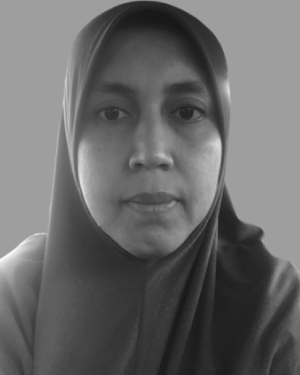
Department of Mechatronics Engineering, International Islamic University Malaysia, Kuala Lumpur, Malaysia
Nazreen Rusli received the bachelor’s degree in communications engineering from International Islamic University Malaysia, in 2005, and the Masters of Professional Engineers degree in electrical engineering from The University of Sydney. She is keen in signal and image processing, real-time computing, and intelligent control related research.
Nazreen Rusli received the bachelor’s degree in communications engineering from International Islamic University Malaysia, in 2005, and the Masters of Professional Engineers degree in electrical engineering from The University of Sydney. She is keen in signal and image processing, real-time computing, and intelligent control related research.View more
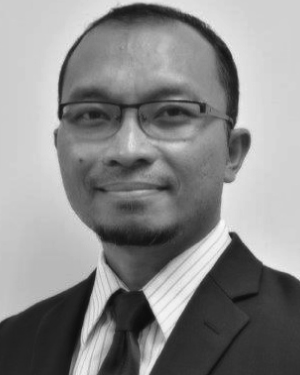
Department of Mechatronics Engineering, International Islamic University Malaysia, Kuala Lumpur, Malaysia
Shahrul Naim Sidek (Senior Member, IEEE) received the B.Eng. and Ph.D. degrees from Vanderbilt University, USA, in 1998 and 2008, respectively. He is currently a Senior Staff with the Department of Mechatronics Engineering, IIUM. He also serves as an Associate Professor of mechatronics engineering at the Department of Mechatronics Engineering, International Islamic University Malaysia. His research interests include human...Show More
Shahrul Naim Sidek (Senior Member, IEEE) received the B.Eng. and Ph.D. degrees from Vanderbilt University, USA, in 1998 and 2008, respectively. He is currently a Senior Staff with the Department of Mechatronics Engineering, IIUM. He also serves as an Associate Professor of mechatronics engineering at the Department of Mechatronics Engineering, International Islamic University Malaysia. His research interests include human...View more
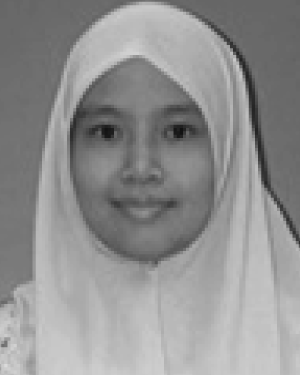
Department of Mechatronics Engineering, International Islamic University Malaysia, Kuala Lumpur, Malaysia
Hazlina Md Yusof (Member, IEEE) received the B.Eng. degree (Hons.) in mechatronics and the M.Eng. degree in electrical from Universiti Teknologi Malaysia, in 1998 and 2000, respectively, and the Ph.D. degree in electrical and electronics engineering from Loughborough University, U.K., in 2012. Her research interests are in the areas of control systems design and applications concentrating on vehicle suspensions, sensors a...Show More
Hazlina Md Yusof (Member, IEEE) received the B.Eng. degree (Hons.) in mechatronics and the M.Eng. degree in electrical from Universiti Teknologi Malaysia, in 1998 and 2000, respectively, and the Ph.D. degree in electrical and electronics engineering from Loughborough University, U.K., in 2012. Her research interests are in the areas of control systems design and applications concentrating on vehicle suspensions, sensors a...View more
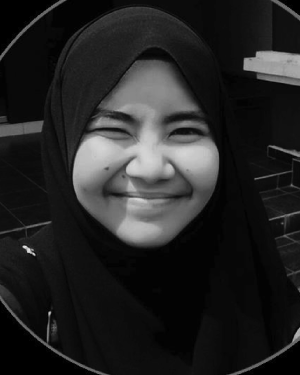
Department of Mechatronics Engineering, International Islamic University Malaysia, Kuala Lumpur, Malaysia
Nor Izzati Ishak was born in Kedah, Malaysia, in 1993. She received the bachelor’s degree in mechatronics engineering from International Islamic University Malaysia, in 2017, and the master’s degree from International Islamic University Malaysia. Her current research interests include biomechatronics and robot interactions.
Nor Izzati Ishak was born in Kedah, Malaysia, in 1993. She received the bachelor’s degree in mechatronics engineering from International Islamic University Malaysia, in 2017, and the master’s degree from International Islamic University Malaysia. Her current research interests include biomechatronics and robot interactions.View more
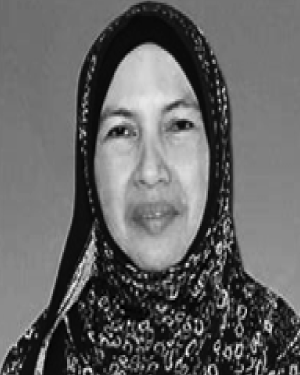
Department of Curriculum and Instruction, International Islamic University Malaysia, Kuala Lumpur, Malaysia
Madihah Khalid received the Ph.D. degree in mathematics education from the Curtin University of Technology, Western Australia, in 2004. She is currently with the Department of Curriculum and Instruction, International Islamic University Malaysia (IIUM). She regularly publishes papers in refereed journals, conference proceedings, as well as book. Her areas of interests include curriculum and instruction, education for spec...Show More
Madihah Khalid received the Ph.D. degree in mathematics education from the Curtin University of Technology, Western Australia, in 2004. She is currently with the Department of Curriculum and Instruction, International Islamic University Malaysia (IIUM). She regularly publishes papers in refereed journals, conference proceedings, as well as book. Her areas of interests include curriculum and instruction, education for spec...View more
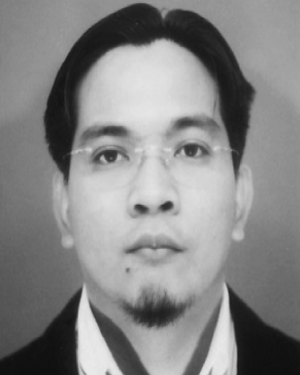
Department of Audiology and Speech-Language Pathology, International Islamic University Malaysia–Kuantan, Kuantan, Malaysia
Ahmad Aidil Arafat Dzulkarnain received the bachelor’s degree (Hons.) in audiology from Universiti Kebangsaan Malaysia (UKM), in 2003, and the Doctor of Philosophy (Ph.D.) degree in audiology from the University of Queensland, Australia, in 2008. He has been a Deputy Dean of Postgraduate and Research of Kulliyyah of Allied Health Sciences, since 2016. His research interests include auditory-electro and neurophsyiology, cl...Show More
Ahmad Aidil Arafat Dzulkarnain received the bachelor’s degree (Hons.) in audiology from Universiti Kebangsaan Malaysia (UKM), in 2003, and the Doctor of Philosophy (Ph.D.) degree in audiology from the University of Queensland, Australia, in 2008. He has been a Deputy Dean of Postgraduate and Research of Kulliyyah of Allied Health Sciences, since 2016. His research interests include auditory-electro and neurophsyiology, cl...View more

Department of Mechatronics Engineering, International Islamic University Malaysia, Kuala Lumpur, Malaysia
Nazreen Rusli received the bachelor’s degree in communications engineering from International Islamic University Malaysia, in 2005, and the Masters of Professional Engineers degree in electrical engineering from The University of Sydney. She is keen in signal and image processing, real-time computing, and intelligent control related research.
Nazreen Rusli received the bachelor’s degree in communications engineering from International Islamic University Malaysia, in 2005, and the Masters of Professional Engineers degree in electrical engineering from The University of Sydney. She is keen in signal and image processing, real-time computing, and intelligent control related research.View more

Department of Mechatronics Engineering, International Islamic University Malaysia, Kuala Lumpur, Malaysia
Shahrul Naim Sidek (Senior Member, IEEE) received the B.Eng. and Ph.D. degrees from Vanderbilt University, USA, in 1998 and 2008, respectively. He is currently a Senior Staff with the Department of Mechatronics Engineering, IIUM. He also serves as an Associate Professor of mechatronics engineering at the Department of Mechatronics Engineering, International Islamic University Malaysia. His research interests include human centered elctromechanical systems, human–robot interation, and affective state computing.
Shahrul Naim Sidek (Senior Member, IEEE) received the B.Eng. and Ph.D. degrees from Vanderbilt University, USA, in 1998 and 2008, respectively. He is currently a Senior Staff with the Department of Mechatronics Engineering, IIUM. He also serves as an Associate Professor of mechatronics engineering at the Department of Mechatronics Engineering, International Islamic University Malaysia. His research interests include human centered elctromechanical systems, human–robot interation, and affective state computing.View more

Department of Mechatronics Engineering, International Islamic University Malaysia, Kuala Lumpur, Malaysia
Hazlina Md Yusof (Member, IEEE) received the B.Eng. degree (Hons.) in mechatronics and the M.Eng. degree in electrical from Universiti Teknologi Malaysia, in 1998 and 2000, respectively, and the Ph.D. degree in electrical and electronics engineering from Loughborough University, U.K., in 2012. Her research interests are in the areas of control systems design and applications concentrating on vehicle suspensions, sensors and actuators, and engineering education for upper and lower secondary. She is also actively involved with research on thermal imaging for human robotic interaction focusing on learning rehabilitation.
Hazlina Md Yusof (Member, IEEE) received the B.Eng. degree (Hons.) in mechatronics and the M.Eng. degree in electrical from Universiti Teknologi Malaysia, in 1998 and 2000, respectively, and the Ph.D. degree in electrical and electronics engineering from Loughborough University, U.K., in 2012. Her research interests are in the areas of control systems design and applications concentrating on vehicle suspensions, sensors and actuators, and engineering education for upper and lower secondary. She is also actively involved with research on thermal imaging for human robotic interaction focusing on learning rehabilitation.View more

Department of Mechatronics Engineering, International Islamic University Malaysia, Kuala Lumpur, Malaysia
Nor Izzati Ishak was born in Kedah, Malaysia, in 1993. She received the bachelor’s degree in mechatronics engineering from International Islamic University Malaysia, in 2017, and the master’s degree from International Islamic University Malaysia. Her current research interests include biomechatronics and robot interactions.
Nor Izzati Ishak was born in Kedah, Malaysia, in 1993. She received the bachelor’s degree in mechatronics engineering from International Islamic University Malaysia, in 2017, and the master’s degree from International Islamic University Malaysia. Her current research interests include biomechatronics and robot interactions.View more

Department of Curriculum and Instruction, International Islamic University Malaysia, Kuala Lumpur, Malaysia
Madihah Khalid received the Ph.D. degree in mathematics education from the Curtin University of Technology, Western Australia, in 2004. She is currently with the Department of Curriculum and Instruction, International Islamic University Malaysia (IIUM). She regularly publishes papers in refereed journals, conference proceedings, as well as book. Her areas of interests include curriculum and instruction, education for special needs, mathematics education, teacher education, assessment and evaluation, and lesson study.
Madihah Khalid received the Ph.D. degree in mathematics education from the Curtin University of Technology, Western Australia, in 2004. She is currently with the Department of Curriculum and Instruction, International Islamic University Malaysia (IIUM). She regularly publishes papers in refereed journals, conference proceedings, as well as book. Her areas of interests include curriculum and instruction, education for special needs, mathematics education, teacher education, assessment and evaluation, and lesson study.View more

Department of Audiology and Speech-Language Pathology, International Islamic University Malaysia–Kuantan, Kuantan, Malaysia
Ahmad Aidil Arafat Dzulkarnain received the bachelor’s degree (Hons.) in audiology from Universiti Kebangsaan Malaysia (UKM), in 2003, and the Doctor of Philosophy (Ph.D.) degree in audiology from the University of Queensland, Australia, in 2008. He has been a Deputy Dean of Postgraduate and Research of Kulliyyah of Allied Health Sciences, since 2016. His research interests include auditory-electro and neurophsyiology, clinical audiology, neuroaudiol-ogy, and signal processing.
Ahmad Aidil Arafat Dzulkarnain received the bachelor’s degree (Hons.) in audiology from Universiti Kebangsaan Malaysia (UKM), in 2003, and the Doctor of Philosophy (Ph.D.) degree in audiology from the University of Queensland, Australia, in 2008. He has been a Deputy Dean of Postgraduate and Research of Kulliyyah of Allied Health Sciences, since 2016. His research interests include auditory-electro and neurophsyiology, clinical audiology, neuroaudiol-ogy, and signal processing.View more

